6 Best Software Developer Courses and Training to Know in 2023
Welcome to 2023, a year full of new technology trends. Software development is continually evolving — are you ready to take on the challenge? Let’s start the year with a bang with this list of best software developer courses and training that will help make it the year you’ll take your software developer career to the next level
Despite 2022’s global economic turbulence and the massive layoffs recently announced by tech giants like Twitter (more than 3,500 employees) and Meta (11,000 employees), the job market for software developers is still going strong.
Yup! Life has been generous with software developers in the past few years. Want a few numbers?
- Their average salary rose by 8% in 2021, reaching an annual wage of $120,204.
- M35% of recruiting companies surveyed by CodinGame planned to hire more than 50 developers in 2022.
And the future looks even rosier! According to the US Bureau of Labor Statistics, the demand for skilled software developers will increase by 25% by 2029.
Dreaming of becoming the next best software developer? The beginning of a new year is the perfect time to set new goals. Whether you’re thinking of starting a new career or planning to level up your software developer skills, the best way to do it is to learn something new and expand your knowledge.
In this article, we’ll cover a list of the latest best software development courses and training so that you can pick the ones that are best for you and make this new year a year to remember in your developer’s life.
Ready to start 2023 on a high note? Let’s go!
6 Best Software Developer Courses and Training for 2023
What do Jimi Hendrix and software developers have in common? Constant practice, learning and development of their craft. Much like how Jimi Hendrix never stopped perfecting and exercising his guitar skills, software developers must do the same with their coding skills to keep pace with the fast-evolving digital world.
Want to become the next Jimi Hendrix of software development and stand out from the crowd at a time when the worldwide developer population is estimated to reach more than 29 million by 2026? Let’s look at some of the best software developer courses that could help you reach your goals. Virtually every software developer can make a program work; however, only the most skilled ones can get it right.
| Hashing Application | Examples | Hashing Application | Examples |
|---|---|---|---|
| 1. Learn a New, Trending Language |
|
|
|
| 2. Full-Stack Cloud Software Developer Certification |
|
|
|
| 3. Unit Testing |
|
|
|
| 4. Secure Software Development Life Cycle (SSDLC) |
|
|
|
| 5. Cybersecurity Course |
|
|
|
| 6. Algorithms and Data Structure |
|
|
|
1. Learn a New, Trending Language
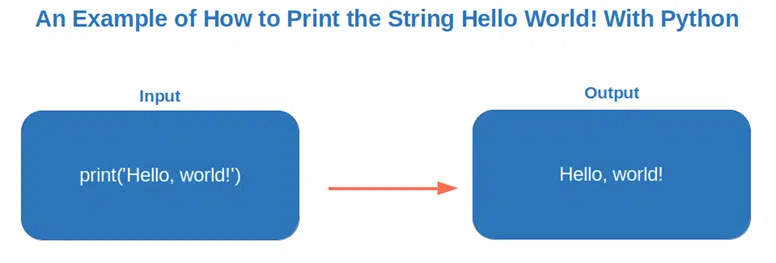
Did you know that the Online Historical Encyclopaedia of Programming Languages (HOPL) has recorded a whopping 8,945 different programming languages? No worries, you don’t need to know all of them to succeed in your software developer career — no one does. But some can become the showpiece of your 2023 curriculum, such as:
JavaScript
If you already know hypertext markup language (HTML) and cascading style sheets (CSS), it may be a good time to go a step forward and master this renowned language.
What Will You Learn Attending a JavaScript Training?
You’ll learn a client-side (i.e., that part of the software that the users see and interact with) programming language that’s used by 98% of websites that’s highly desired by startups. Learning JavaScript will enable you to create dynamic and interactive websites, applications, and complex programs.
Why Should You Complete a JavaScript Course or Training?
- It has been the most used programming language for the 10th year in a row (according to the 2022 StackOverflow developer survey).
- It’s easy to learn, particularly if you’re already familiar with HMTL and CSS.
- It’s platform-agnostic, working on mobile, desktop, and web.
- It pays off! The average annual salary of a JavaScript developer in the U.S. is around $115,000.
- It’s used by big tech companies like Google, Facebook, and Microsoft, just to name a few.
Python
Are you already proficient with JavaScript? Are you interested in learning something more versatile? Python may be the right choice for you.
What Will You Learn in a Typical Python Course?
Python is a versatile, general-purpose language that’s used basically everywhere — from websites, video games (e.g., Toontown), and applications to self-driving cars, task automation, and software testing.
Why Should You Learn Python?
- It’s the second most popular programming language among developers.
- It’s multi-purpose, enabling it to be extensively used for artificial intelligence, the internet of things, machine learning, and for applications like FreeCAD and Abacus.
- It’s free, open-source language with a big development community
- It’s extremely easy to pick up.
- It can help you get a reasonably good annual salary (i.e., $121,875 average).
- It’s used by organizations like Spotify, Netflix (for its recommendation algorithm), and Quora.
Want to know more? This entertaining short video answer the question “Why you should learn it?” in four minutes.
Fun fact: did you know that the name Python came from Monty Python, a British comedy group that created the famous, funny series Monty Python’s Flying Circus?
Golang (AKA Go)
Want to learn something relatively new, easier than C and C++ and that’s growing in popularity? Give Go a try.
What Will You Learn?
Golang, or Go as it’s more commonly known, is an open-source, statically typed (i.e., the program won’t start if the errors in it haven’t been fixed) programming language that was developed by Google engineers in 2007. Using this language will help you speed up the time needed to build software and provide you with a more efficient way to manage dependencies.
Why Should You Learn Golang?
- Go is fast and it can be used to run several processes at the same time.
- It’s great for large programs, high-performance applications, and microservices.
- It’s growing in popularity, being used for cloud services (e.g., Google Cloud is built on Go), booking systems like those used by Uber and Trivago, chatting and messaging programs (e.g., Slack and Twitch), and much more.
- Knowing Go can help you reach an annual salary of $130,000 (U.S. average).
Find out more about Golang and see it in action in this 12-minute video:
No matter which new programming language you pick, you’ll be able to choose among many courses and training. The majority can be attended online. Many are free and some paid courses may even give you a certificate of completion. And, last but not least, the three languages suggested are pretty good — even for beginners.
Learning a new language is not on your 2023 to-do list? OK, let’s move on to our next suggestion.
2. Become a Certified, Full-Stack Cloud Software Developer
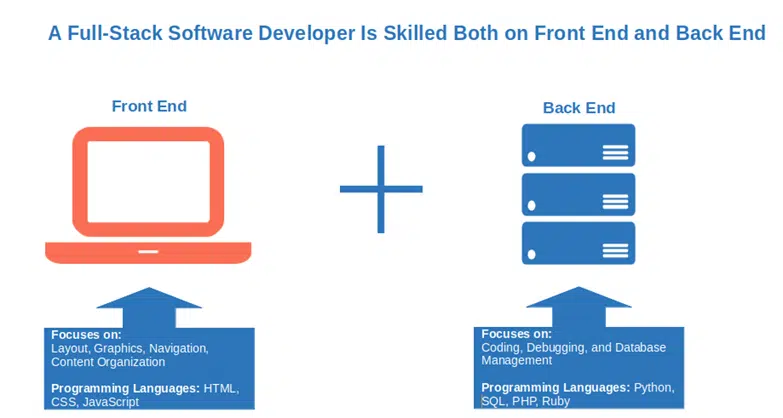
Do you want to expand your skills to contribute to the development of both the front and back end of a website or application but don’t know how? Are you looking to make your curriculum vitae (CV) and resume more attractive in a world where Gartner forecasts end-user spending on public cloud services to grow up to $591.8 billion in 2023?
Check out the internet for full-stack software developer courses on offer. There are many, and some are sponsored by big tech companies like IBM and Meta. You may have to invest a bit of money and time, but in the end, you’ll become a well-rounded software developer. And you’ll get a shiny certificate to add to your resume and CV. Are you a newbie? No problem! Many of these courses don’t require any previous experience.
What Will You Learn in a Full-Stack Cloud Software Developer Course?
This training will provide you with all the knowledge you need to successfully build, deploy, test, run, and manage full-stack cloud-native applications.
- You’ll use popular front-end developer languages like JavaScript and frameworks (e.g., Bootstrap) and back-end languages like Python, and frameworks (e.g., Django).
- You’ll learn everything about the back end of the software development process.
- You’ll deploy and scale applications using containers, microservices, Kubernetes, and serverless functions.
- You’ll discover the world of cloud technologies and, in some courses, you’ll also participate in hands-on projects.
Why Should You Complete Full-Stack Cloud Software Developer Training?
- You’ll become a well-rounded, self-sufficient software developer that’ll be not only able to create software but also perform tests, troubleshoots, and build application programming interfaces (APIs).
- You’ll increase your GitHub portfolio to attract potential employers by showcasing your work done during the training sessions.
- You’ll gain fundamental knowledge of cloud computing, making you even more employable. In fact, big companies like eBay, General Electric, Apple, and Netflix are successfully utilizing cloud computing.
By the way, did you know that a full-stack developer can make up to $149,000 per year in the U.S.? Not bad, huh?
3. Get Skilled in Unit Testing
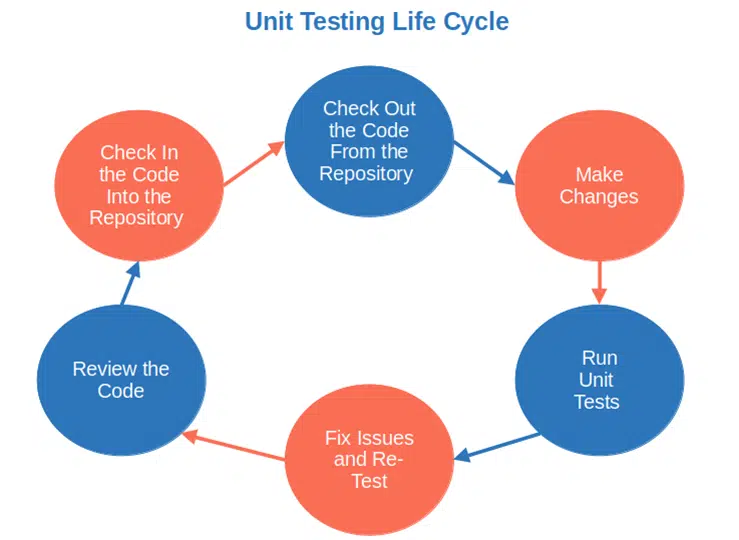
With security becoming one of the biggest concerns, 78% of organizations interviewed by RedHat in 2022 have embedded security into their development process (i.e., devsecops and secdevops). Unit testing is one step that enables organizations and developers to shift security left and ensure that every entity in the code is written correctly.
What Will You Learn By Completing a Unit Testing Training?
Depending on the programming language you’re using (yup, this isn’t a course for beginners, I’m afraid), you may want to pick a related unit testing course among all the online offers available on the internet.
I usually try to prefer those issuing a completion certificate that I can add to my portfolio, but it’s up to you. In any case, in a typical unit testing training, you’ll:
- Understand what unit testing is and why it’s important.
- Learn how to write effective unit tests from scratch using the mocking technique. They’ll be easier to maintain, cleaner, and more trustworthy.
- Discover how to refactor legacy applications (i.e., improving old code without adding any new functionality) and add automated tests.
- Explore some useful best practices.
Why Should You Attend a Unit Testing Course?
- No testing, no party. Unit testing knowledge is a must-have skill for every professional developer. No organization would hire you if you don’t know how to write unit tests.
- It’ll help you guarantee that the code you write is error-free and that every input, returns the expected output. In other words, it’ll make your code more secure.
- It’ll help you detect flaws earlier in the process, and fix them faster, thus speeding up the development process.
- It’ll save your organization money by avoiding discovering and fixing errors at the last minute.
- It’ll improve the quality of the code and you’ll deliver a final product that works. What’s better than that?
4. Follow a Course on Secure Software Development Life Cycle (SSDLC)
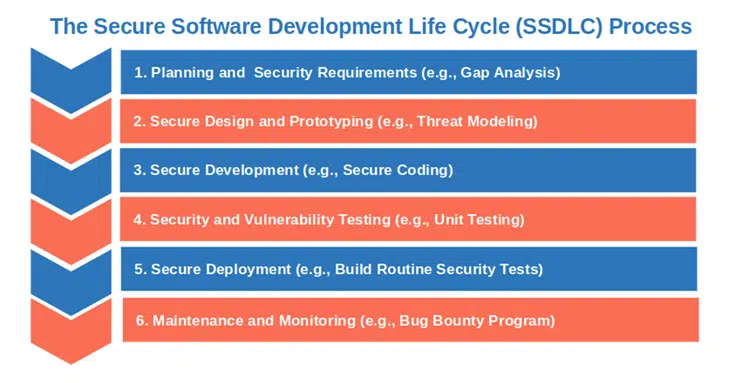
With 91% of organizations reporting at least one cybersecurity event in 2022 and 56% experiencing revenue loss, security is becoming a hot topic. Thus, organizations are trying to address software vulnerabilities as soon as possible. How? For example, with unit testing and by implementing SSDLC (i.e., the evolution of SDLC, integrating security in every step of the software development journey).
What Will You Learn By Completing an SSDLC Course?
While many courses available on the internet focus on the more traditional SDLC, there are also a few (often those offering official certifications like those on cloud security we mentioned earlier) that take this further and include the SSDLC in their training. One of the best things? These courses are suitable for beginners, too.
By following one of these courses, you’ll:
- Get a deep dive into the foundations of the secure development process.
- Understand how to embed security in each step of the development process.
- Learn how to create more secure and reliable software, from start to finish.
Why Should You Learn Everything About SSDLC?
- It’ll enhance the quality and the security of the software you deploy; thus, your reputation as a software developer will increase.
- It’ll help your organization save money by identifying and fixing vulnerabilities and errors sooner during development.
- It’ll speed up your software development process by facilitating the introduction of automated security tests at every stage of the SDLC.
- It’ll make your CV much more interesting and competitive by showing that you have skills and that you care about security.
5. Attend a Cybersecurity Related Course
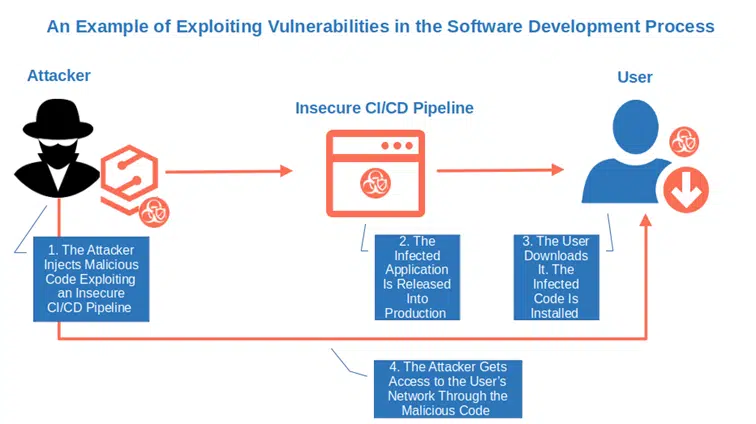
I know, we’ve just talked about security. However, with the cost of attacks on cyber-physical systems (i.e., CPS – semi-autonomous systems like the smart grid, medical monitoring, robotics, and more) predicted to reach $50 billion in 2023, security will have to become one of the core items of your CV if you want to progress in your software developer career. Moreover, if you want to keep the bad guys away, staying up to date with the latest risks and attack techniques is something you can’t do without.
What Will You Learn in a Cybersecurity Training?
There are thousands of online software developer courses on cybersecurity. Some will be more specific than others (e.g., focusing on certain areas or programming languages), and all require some front-end programming language knowledge, as well as familiarity with databases and JSON. Some of the topics usually included in the training are:
- How to protect your applications from different attacks.
- How to build highly secure applications.
- Code signing (i.e., signing your software with a trusted digital certificate) — everything from how it can help protect your organization and users from malware (e.g., wiper malware) to how to securely manage your certificates and keys.
- How to safeguard your software with encryption (e.g., digital certificates).
- How secure software development frameworks (SSDF) can help you implement the SSDLC process effortlessly.
- Secure protocols (e.g., SSL/TLS) that effectively protect your data transmissions.
Why Should You Complete a Cybersecurity Training?
- Get to know your enemy. To build secure applications, you need to know the tools and techniques available to protect them from an attacker.
- Increase your credibility and reputation as a software developer by ensuring the integrity and security of your code.
- Increase your employability. With the startups’ concerns about the risk of a cybersecurity attack rising from 36% in 2021 to 50% in 2022, expertise in cybersecurity will be a big plus.
6. Learn About Algorithms and Data Structure
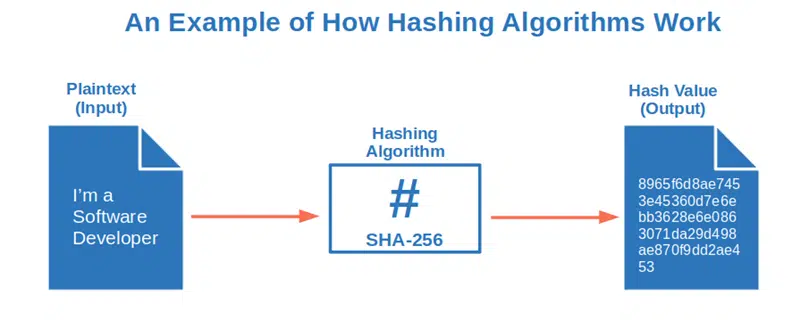
When I was working for a big tech company, I sometimes supported hiring managers during the interviews of software developer candidates. Questions about algorithms (e.g., hashing algorithms, search algorithms) and/or data structure (i.e., data arranged in a way to make a process easier to follow) were always on the agenda. Want to crack the next software developer interview? Make sure you know your algorithms and data structure. By the way, to enroll in such courses, you’ll need to be familiar with at least one programming language.
What Will You Learn By Completing an Algorithm and Data Structure Course?
Among the several topics offered by the courses, you’ll discover:
- How data structure works and their strengths and weaknesses.
- All about the most popular algorithms (including search, hashing, and sorting), their features, and which one to use when.
- Ways to improve your problem-solving skills.
- Meaning of terms like hash tables, stacks, and arrays.
- How to write code efficiently by choosing the correct data structures and the best algorithms.
Why Should You Enroll in an Algorithm and Data Structure Course?
In addition to increasing the chance of landing your dream job at a big tech company, you’ll be better equipped to:
- Become a stronger developer by boosting your problem-solving and analytical skills.
- Choose the best data structure for your data and apps that’ll guarantee good software performance even in the worst-case scenarios.
- Learn the fundamentals of computer science without the need for previous experience.
- Start writing clear and optimized code (as professional developers do).
- Learn how to create algorithms to simplify tasks quickly and efficiently.
OK, we could have added more suggestions to our list, from learning agile workflows to how effectively use GitHub, for example. However, too many options would only make your choice more difficult.
If you want to succeed and avoid having your new year’s resolutions wind up in your pile of shame (c’mon, we all have one!), be smart. Pick only a couple and focus on those. How can you make sure you choose the right ones for you? Bear with us. We’ve got the answer.
What Should You Consider When Choosing Your Software Development Training?
Online training, certifications, boot camps, YouTube videos, LinkedIn tutorials, you name it. The global software development market was valued at more than $461 billion in 2022 and is expected to rise up to 11.7% by 2030. Knowing this, it isn’t surprising that there are so many software developer courses available everywhere.
Want to ensure you pick the best software developer training for your needs without getting lost in the myriads of options available? Don’t forget to consider the following:
- Format and schedule. Are you a traditional, in-person student, or an online training person? I’m the latter. I simply love online classes. Why? Because they’re highly flexible and always available. I can start and stop them when I want and where I want. This is great, above all when the course you chose requires a high number of hours to complete.
- Instructor. Make sure you do your research about the course instructor before you pick your training. A few years ago, I attended a project management course in Germany. I do speak German fluently, but it’s not my mother tongue. The fact that the instructor was Swiss, made the course a bit more challenging. Don’t get me wrong, he was a skilled teacher and I loved his accent, but Swiss German is not what you learn at school. It’s definitely different from the German spoken in Germany and is harder to understand for a non-native speaker.
- Paid or free? This will definitely depend primarily on your finances. Is your boss paying? You’re in luck. You’ll have a broader choice and you could opt for classes offered or sponsored by prestigious big tech companies (e.g., IBM, Google), organizations (e.g., National Institute of Standards and Technology – NIST), and top universities (e.g., Princeton or Harvard). If your boss isn’t paying, don’t despair. Even if money is tight, there are many free or cheap platforms that, in some cases, offer courses or certifications (e.g., YouTube, Udemy, Coursera, and the already mentioned LinkedIn).
- Reviews and ratings. The innkeeper will always tell you that his wine is the best one. Want the truth? Check users’ reviews and ratings. It’s the best way to bet your hard-earned money on the right horse.
- Prerequisites. In the majority of cases, you should be able to start the training without any previous knowledge, but this isn’t always possible, above all for highly technical courses.
- Certificates. How would you prove to your employer that you have acquired a certain level of a specific skill? Either you show him practically (which may take some time and it isn’t really possible when you’re sending your job application) or you list your certificates. Not all software developer courses offer a certificate of completion, but if they do, it’d be a valuable addition to your resume, and LinkedIn profile.
- Syllabus. Want to kill two birds with one stone and take your curriculum vitae to another level? Look for software developer training that includes hands-on projects. Why? Once completed, you’ll be able to add them to your list of achievements. Sometimes, they can even be useful in passing official certification exams.
So, which software developer courses and training are you going to add to your 2023 new year resolution list?
Final Thoughts on 6 Best Software Developer Courses and Training
A new year is like a blank canvas. It gives you the unique opportunity to transform the time ahead into a productive, rewarding, and successful future. And in the world of technology, where everything evolves rapidly, continuing to learn new skills and constantly challenging yourself is key.
We’ve assembled the list of courses, and now it’s your turn to choose the ones to add to your 2023 resolutions based on your interests and experience. From:
- Learning one or more new languages, to
- Expanding your horizons by focusing on cybersecurity, or
- Training to become a full-stack software developer.
There’s something for everyone. Are you ready to add some bright colors to your 2023 canvas and make it another fantastic year as a software developer?



